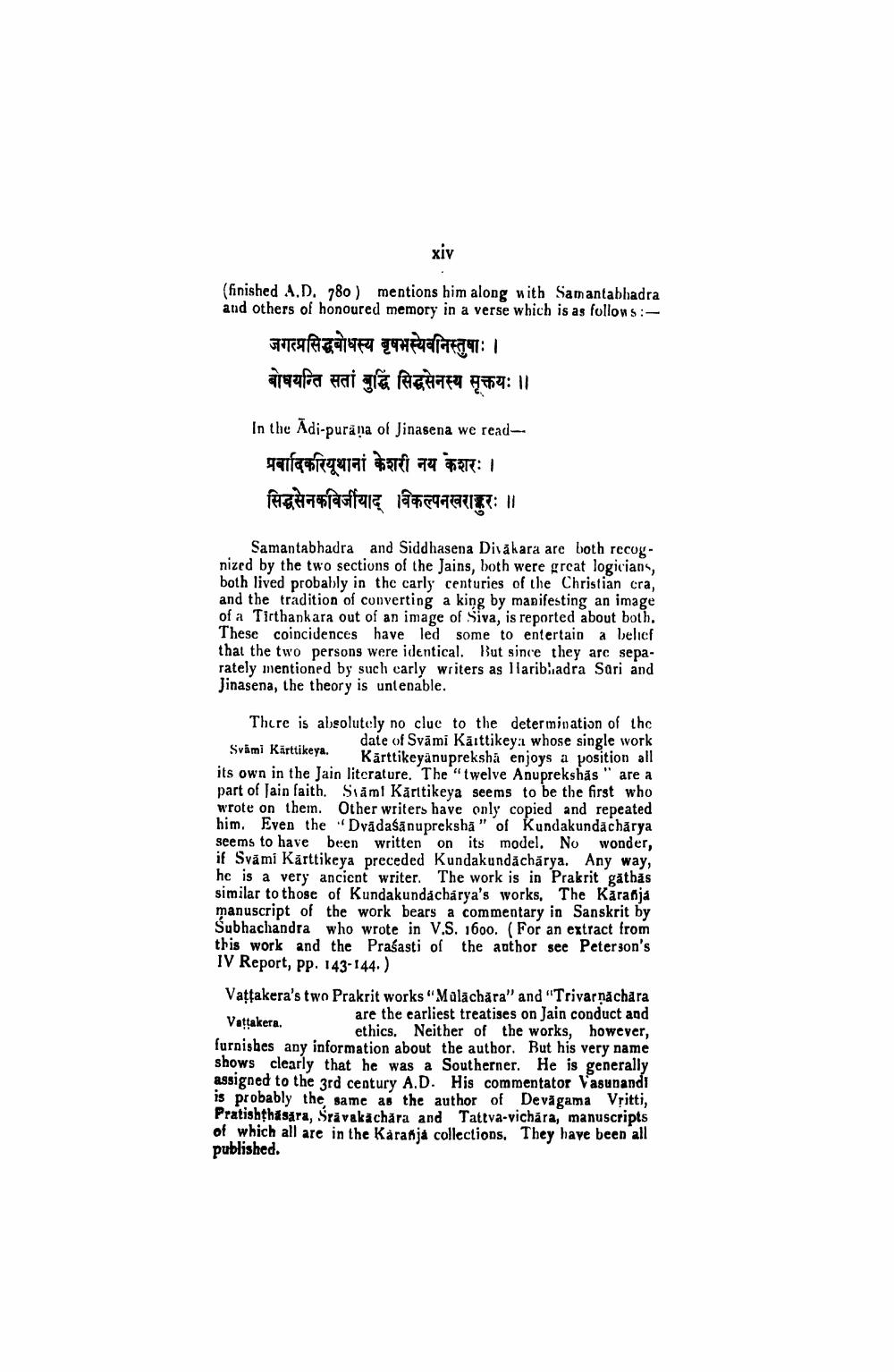________________
xiv
(finished A.D. 780) mentions him along with Samantabhadra and others of honoured memory in a verse which is as follows:
जगत्प्रसिद्धबोधस्य बृषभस्यवनिस्तुषाः । बोधयन्ति सतां बुद्धिं सिद्धसेनस्य सूक्तयः ॥
In the Adi-purāņa of Jinasena we read प्रवादिकरियूथानां केशरी नय केशरः । सिद्धसेनकवि याद् विकल्पनखराकुरः ॥
Samantabhadra and Siddhasena Divakara are both recognized by the two sections of the Jains, both were great logicians, both lived probably in the carly centuries of the Christian cra, and the tradition of converting a king by manifesting an image of a Tirthankara out of an image of Siva, is reported about both. These coincidences have led some to entertain a belief that the two persons were identical. But since they are separately mentioned by such carly writers as llaribiadra Sari and Jinasena, the theory is unl enable.
There is absolutely no clue to the determination of the
date of Svāmi Kārttikey whose single work Svāmi Karttikeya. Karttikevànupreksha enjoys a position all its own in the Jain literature. The "twelve Anuprekshäs" are a part of Jain faith. Suami Karttikeya seems to be the first who wrote on them. Other writers have only copied and repeated him. Even the Dvādaśānupreksha" of Kundakundacharya seems to have been written on its model. No wonder, if Svāmi Kārttikeya preceded Kundakundacharya. Any way, he is a very ancient writer. The work is in Prakrit gathas similar to those of Kundakundacharya's works. The Karanja manuscript of the work bears a commentary in Sanskrit by Subhachandra who wrote in V.S. 1600. (For an extract from this work and the Prasasti of the author see Peterson's IV Report, pp. 143-144.) Vaffakera's two Prakrit works "Malachăra" and "Trivarnachara
are the earliest treatises on Jain conduct and
ethics. Neither of the works, however, furnishes any information about the author. But his very name shows clearly that he was a Southerner. He is generally assigned to the 3rd century A.D. His commentator Vasunandi is probably the same as the author of Devă gama Vritti, Pratishthasara, Sravakächăra and Tattva-vichara, manuscripts of which all are in the Karanja collections. They have been all published.
Vattakera.




